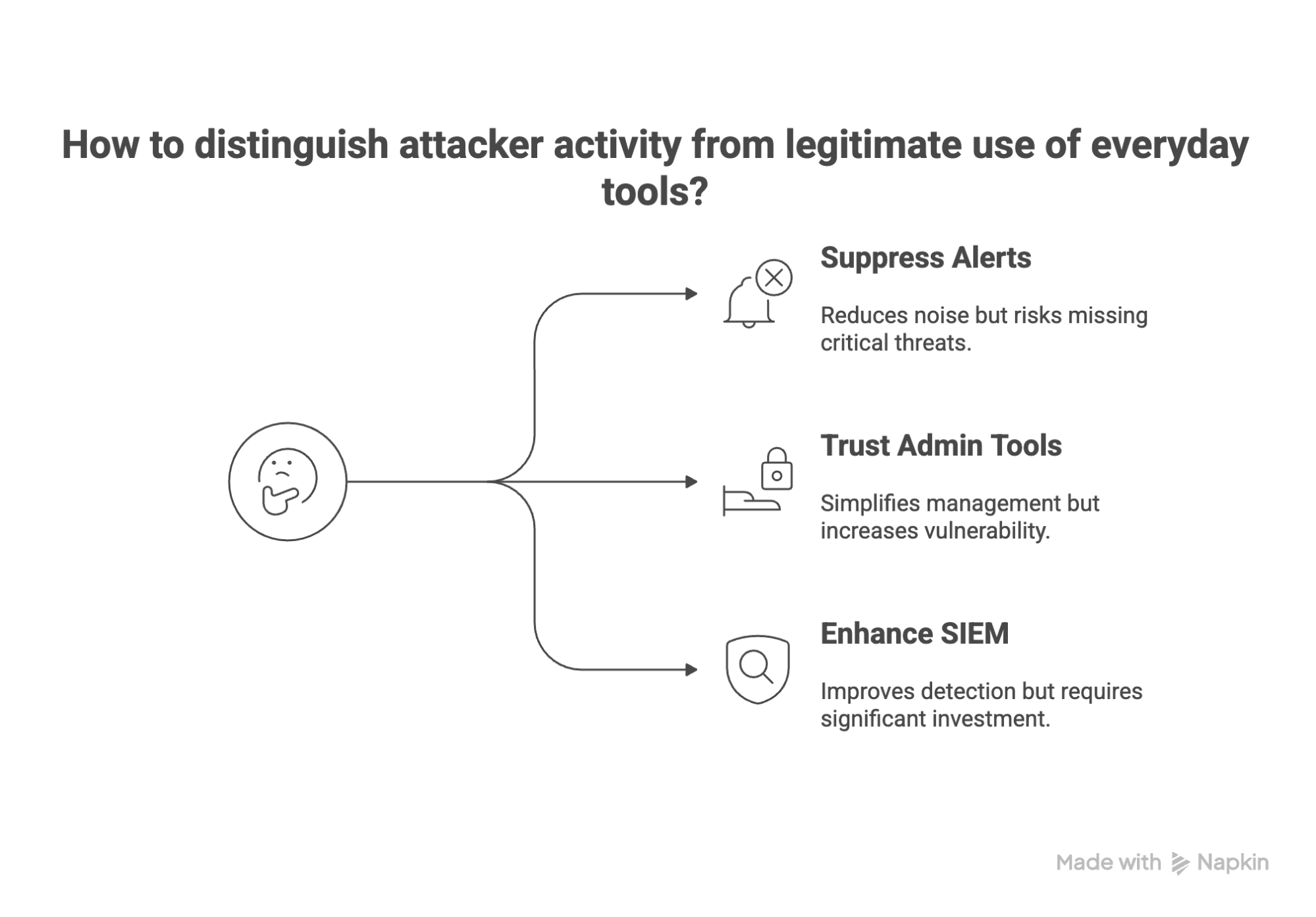
Keith Casey
October 7, 2025

SIEM (Security Information and Event Management) is an important component for modern Security Operations Centers (SOCs). SIEM systems collect logs, correlate events, and generate alerts that analysts depend on. Without SIEM, organizations would be left blind to many potential threats.
However, SIEM can also overwhelm defenders with excessive noise. Security analysts often contend with long queues of alerts, many of which are false positives or low-value signals. This situation can be dangerous, as real threats may go unnoticed amid the clutter. Often, by the time security analysts identify these genuine threats, the attackers have already succeeded.
This blog gives cybersecurity leaders and practitioners an understanding of how noise is overwhelming SOCs. This lays the groundwork to show how physical input verification can eliminate blind spots in your SIEM platform and threat detection processes.
To understand how noise cripples SOC teams, it helps to start with the source. The problem begins with the sheer volume of events SIEMs must process every day.
SIEMs process millions of log entries daily. Even after correlation and filtering, the number of alerts overwhelms SOC teams. A Microsoft-cited ESG report revealed that 44% of SIEM alerts go completely uninvestigated, while many others are reviewed long after the attacker has finished their work.
False positives bury the real signals, leaving security analysts unable to distinguish real threats from background noise.
Attempts to tune rules or refine baselines don’t solve the issue. Attackers adjust their behavior to blend in with what appears routine. Noise doesn’t go away; it mutates, and that evolution becomes a weapon for attackers.
One of the most effective ways attackers exploit this noise is by abusing the very tools enterprises rely on every day.
Noise is a shield for attackers. They exploit the fact that SOC teams are already drowning. By blending into routine logs, adversaries move laterally without raising alarms.
PsExec exemplifies a significant problem. IT staff utilize it daily for legitimate remote administration; however, its high false positive rate leads many SOC teams to ignore PsExec alerts altogether. Attackers are aware of this vulnerability and exploit it to move laterally through networks without detection.
Similarly, PowerShell remoting and WMI execution share the same problems. While both functions are important for enterprise management, they can appear normal in SIEM logs. As a result, security analysts often struggle to distinguish between an administrator running a script and an attacker mapping the network.
Attackers exploit three hard truths:

If SIEM can’t distinguish legitimate activity from attacker behavior, defenders require a new signal, ideally in real-time rather than after the incident.
The gap between noisy logs and actionable intelligence cannot be closed with more rules or filters. It requires a new layer that validates activity at the source.
Logs explain what happened, but cannot prove who caused it. Physical input verification fixes that. It suppresses verified, legitimate activity and raises events only when input cannot be verified.
Instead of adding more alerts, it reduces them while strengthening their signal. The SOC no longer chases endless entries and can focus only on signals that matter.
The difference becomes clear when comparing how traditional SIEM handles events versus how SIEM functions with input verification.
This approach transforms SIEM from a forensic log archive into an active defense platform. Instead of learning about an attack after the fact, SOC teams gain clarity in real time and the power to respond before damage spreads.
The first and most immediate improvement shows up at the analyst’s desk. When physical input verification is added to SIEM, the day-to-day experience of triage and response changes dramatically.
With physical input verification layered into SIEM, analysts are no longer buried under mountains of alerts. The signal is precise: a command occurred without verified human input. That is not background noise; it’s attacker behavior worth investigating.
This shift delivers:
Chief Information Security Officers (CISOs) and SOC managers also see measurable improvements:
Once security analysts and security leaders trust the alerts, SIEM stops being a passive recorder and becomes the cornerstone of a stronger security workflow.
To see how this works in practice, the first step is understanding how input verification fits into the systems SOC teams already depend on.
Keystrike doesn’t replace SIEM; it strengthens it. Physical input verification integrates seamlessly into existing SIEM and Security Orchestration, Automation, and Response (SOAR) ecosystems. This integration means organizations preserve their established workflows while gaining a new layer of trust in the alerts they already rely on.
Once integrated, the effect is immediate: SIEM begins to act not just as a recorder of events, but as a filter that distinguishes trusted input from attacker-driven activity.
With input verification in place, the experience in Security Operations Centers changes significantly. Verification happens in real time, allowing legitimate actions to go through without any issues, while unverified commands generate alerts that are important.
These alerts, enhanced with clear attribution, can trigger automated SOAR actions, such as isolating a session or blocking a command, preventing attackers from advancing further.
The outcome is a significant transformation. Instead of reacting long after a compromise occurs, SOC teams can respond at the moment of intrusion. This change sets the stage for the ultimate goal: clarity, efficiency, and confidence in defense operations.
SIEM remains vital, but it has always struggled with volume and noise. False positives overwhelm security analysts. Attackers thrive in the chaos, hiding their lateral movement in the clutter of routine activity.
Physical input verification changes the game. By suppressing normal activity and raising events only when verification is missing, it flips SIEM’s role. No longer just a chronicle of what happened, SIEM becomes an active defense system that delivers trustworthy, actionable alerts in real time.
For security analysts, it means fewer wasted cycles and faster response. For CISOs, it means stronger ROI and reduced breach risk. And for attackers, it means the shield of noise is gone.
Try Keystrike in Your Environment for 30 Days
